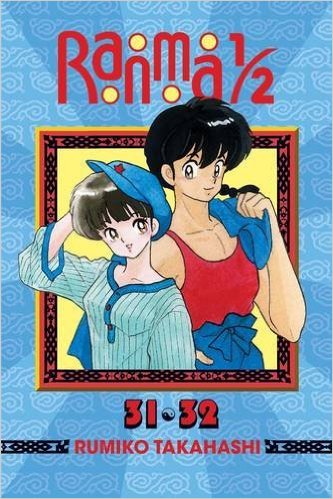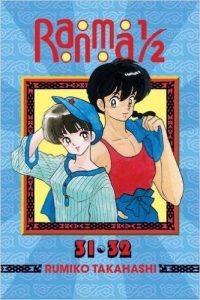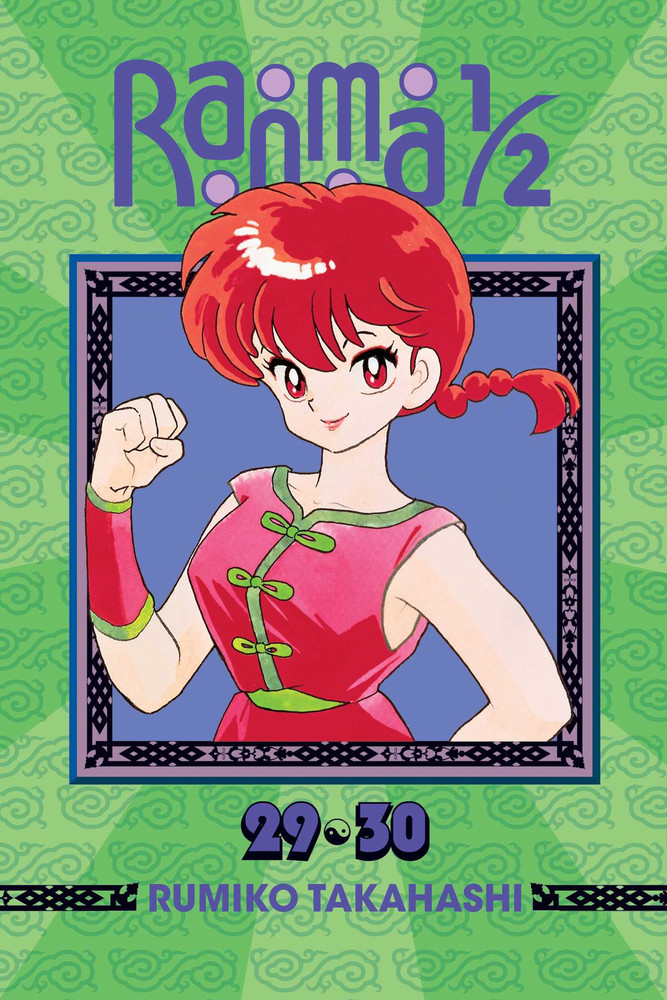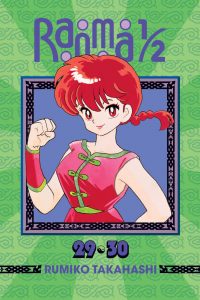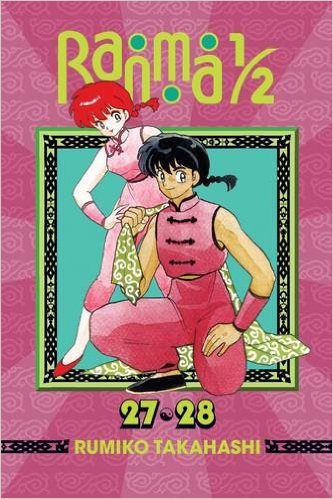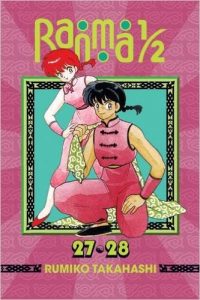By Rumiko Takahashi. Released in Japan by Shogakukan, serialized in the magazine Shonen Sunday. Released in North America by Viz. Translated by Kaori Inoue, Adapted by Gerard Jones.
The mid to late 1990s was a very strange time for anime fandom on the internet. Information was scarce and fleeting, and most fans relied on hearsay and textual spoilers. We’re a long ways before the era of scanlations and raws being available on all good pirate sites. As a result, Ranma fans who wanted more information (since the anime wasn’t adapting the final volumes, clearly) had synopses and that’s about it. this did not, of course, stop them from using said characters in fanfics, particularly if they helped pair up someone who didn’t really pair up easily before.
For example, we meet Rouge here, a Chinese girl (you can tell she’s Chinese as Takahashi names her after a beauty product, even though she’s not from Shampoo’s village) who ends up in a cursed spring thanks to Pantyhose Taro, and is now determined to have her revenge – most of which involves destroying the Tendo home. It’s an amusing story, relying on her falling in the spring of drowned ASURA, which is drawn with as much ridiculousness as it is possible to have. The denoument, where we see what she’s been fighting to retrieve all this time, is also funny in that Takahashi “so it was all completely pointless” way. Now, Rouge never shows up in the manga again, but several fanfic writers decided she made a good pair with Pantyhose (why they didn’t not write Pantyhose is beyond me, but hey) and thus she had a larger effect on the fandom than she did on the manga itself.
The same goes for Asuka the White Lily, who if she’d appeared ten years later would absolutely have been shipped with Kodachi – even leaving aside the Lily nickname, she’s a ojousama from a private school with a hate on for her childhood friend. But this is 1996, not 2006, and thus the battle between them over who has the best boyfriend (the joke being that because they’re both so horrible neither one has ever found a boyfriend) is taken by fandom somewhat at face value. Don’t worry, Asuka, someone will write a tortured yuri scene with you and Kodachi one day. Oh yes, and Akari shows up again, the only one of these girls who is making repeat appearances, as she visits Ryouga’s home (where, for once, he actually is) and gets caught up in a drawing room farce so broad I was expecting a plate of sardines.
For those who want ship tease with the regulars, well, there’s the hilarious Umbrella of Love story, which features the only known Kuno and Nabiki tease in the entire manga (even under the power of a mind-controlling umbrella, she’s still taking his money), but this is all about Ranma and Akane. As if knowing the end of the series is near, we get a truly incredible amount of moments between them. The umbrella is mostly played for laughs, but shows their feelings for what they are. The story with the Cursed Doll is almost horror, as Akane tries desperately to regain her body before Ranma is either dead or seduced. And most of all we have the arc where Akane gains a possessed armor with a mind of its own, one that makes her stronger than Ranma, and can only be removed if the wearer loses their heart to another. This should be the cue for more hijinks, but it’s played more seriously than I expected, with Ranma realizing how beautiful Akane really is, and trying to defend his true feelings even as she thinks he’s being like this to deceive her (as, to be fair, he has done over and over again).
Ranma never ends with any canon ships, though some are so close that you’d have to be a 1990s Ranma fan in order to deny them. Putting that aside, though, this is a particularly strong volume, one where even the Happosai story made me smile (not because I sympathized with him, it was simply ridiculous). Classic manga comedy at its finest.
